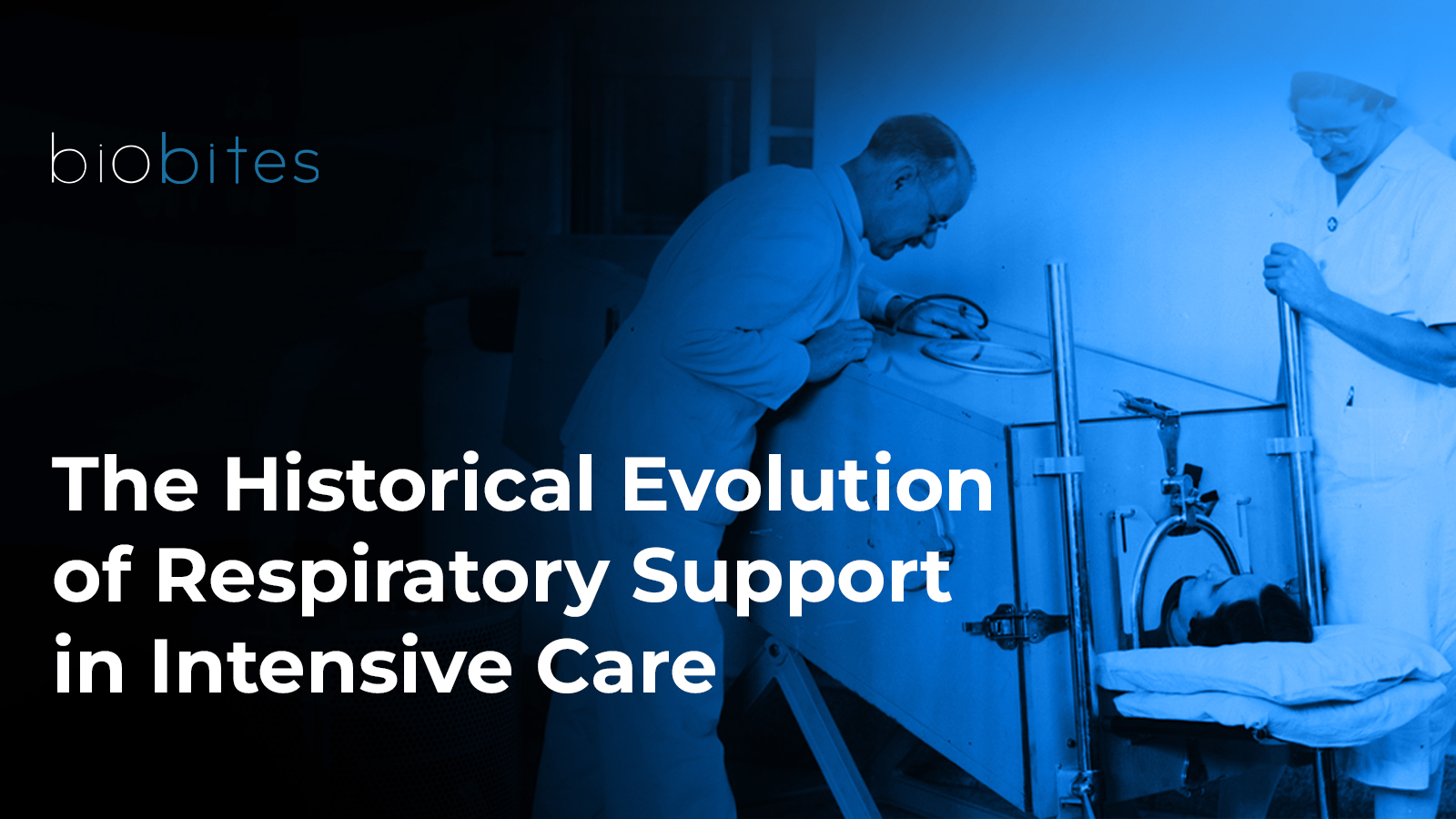Respiratory support in intensive care has undergone a significant transformation over time, evolving from simple manual techniques to sophisticated, intelligent devices. The initial use of negative pressure ventilation devices such as the “iron lung” in the early 20th century marked the beginning of this journey. A major turning point occurred during the poliomyelitis outbreak in Copenhagen in 1952, when positive pressure ventilation was successfully employed, laying the foundation for modern intensive care practices.
From the 1960s onward, volume- and pressure-controlled mechanical ventilators were developed, offering greater control over respiratory support. The introduction of microprocessor-based ventilators in the 1980s enhanced the precision and safety of mechanical ventilation. By the 2000s, lung-protective strategies—such as the use of low tidal volumes and appropriate levels of PEEP—had become widely adopted.
Over time, non-invasive ventilation techniques (such as BiPAP and CPAP) and high-flow nasal oxygen therapy have also become increasingly prevalent. The COVID-19 pandemic further underscored the critical role of ventilators in the management of acute respiratory failure. Today, respiratory support is delivered via advanced technologies that incorporate artificial intelligence, allow for individualized settings, and prioritize lung-protective strategies.
Respiratory Support in Intensive Care
Respiratory support in intensive care refers to the set of invasive and non-invasive methods employed to ensure adequate oxygenation and carbon dioxide elimination in patients experiencing respiratory failure. It is indicated in cases where the patient is unable to maintain sufficient spontaneous breathing or when it is necessary to reduce the work of breathing. The primary objectives of respiratory support are to optimize gas exchange, protect the lungs, and sustain life until the underlying condition improves.
Types of Respiratory Support
Respiratory support is broadly classified into two main categories:
1. Non-invasive respiratory support:
This form of support is delivered through a face mask or nasal cannula without the need for endotracheal intubation. Common methods include high-flow nasal cannula (HFNC) therapy and non-invasive mechanical ventilation (e.g., BiPAP or CPAP).
2. Invasive respiratory support:
This approach requires the placement of an endotracheal tube into the trachea. It involves mechanical ventilation or, in more advanced cases, extracorporeal membrane oxygenation (ECMO), particularly in severe or refractory respiratory failure.
Indications for Respiratory Support
Respiratory support is indicated in the following conditions:
- Hypoxemic respiratory failure (PaO₂ < 60 mmHg): such as acute respiratory distress syndrome (ARDS), pneumonia, and COVID-19.
- Hypercapnic respiratory failure (PaCO₂ > 45 mmHg): including exacerbations of chronic obstructive pulmonary disease (COPD) and neuromuscular diseases.
- Cardiogenic pulmonary edema
- Postoperative respiratory depression
- Trauma, sepsis, and metabolic disorders
What Is a Mechanical Ventilator?
A mechanical ventilator is a medical device that delivers air to the lungs using positive pressure to support or completely take over the breathing process in patients with respiratory failure. It is used in intensive care units, operating rooms, and emergency departments to temporarily maintain respiratory function in critically ill patients. Mechanical ventilation mimics natural breathing by meeting the body’s oxygen demands, regulating carbon dioxide removal, and allowing the respiratory muscles to rest.
Primary Objectives of Mechanical Ventilation
- To correct hypoxemia (increase oxygen levels)
- To reduce hypercapnia (eliminate excess carbon dioxide)
- To decrease the work of breathing
- To prevent complications through lung-protective ventilation strategies
- To support spontaneous breathing and prepare the patient for weaning from the ventilator
How Is Mechanical Ventilation Used?
1) Preparation and Patient Selection
Mechanical ventilation is typically initiated in the following conditions:
- Acute respiratory failure
- Acute respiratory distress syndrome (ARDS)
- Exacerbation of chronic obstructive pulmonary disease (COPD)
- Systemic conditions such as sepsis, trauma, or brain injury
- Postoperative respiratory depression
The patient is intubated by inserting an endotracheal tube into the trachea, which is then connected to the mechanical ventilator.
2) Mode Selection
The mechanical ventilator can be set to operate in various modes:
- Controlled Mode (AC – Assist/Control): The device initiates and controls every breath; the patient does not contribute to ventilation.
- Supported Mode (SIMV – Synchronized Intermittent Mandatory Ventilation): The patient can breathe spontaneously between mandatory breaths; the ventilator provides support as needed.
- Pressure Support Ventilation (PSV): The ventilator delivers pressure support with each spontaneous breath initiated by the patient.
- Continuous Positive Airway Pressure (CPAP): Provides continuous positive pressure to spontaneously breathing patients.
3) Monitoring
During mechanical ventilation, the following parameters are closely observed:
- SpO₂ (oxygen saturation)
- End-tidal CO₂ (etCO₂)
- Tidal volume and minute ventilation
- Respiratory mechanics (compliance, resistance)
- Alarm systems (e.g., high pressure, low volume, disconnection)
4) Complications and Precautions
- Ventilator-Induced Lung Injury (VILI): To prevent volutrauma, barotrauma, and atelectasis, low tidal volumes and appropriate positive end-expiratory pressure (PEEP) settings should be employed.
- Ventilator-Associated Pneumonia (VAP): Preventive measures such as meticulous oral care and maintaining the head of the bed at a 30–45° elevation are essential.
- Hemodynamic Effects: High levels of positive pressure can reduce venous return and consequently affect cardiac output.
- Diaphragm Atrophy: Prolonged use of full-support ventilation modes may lead to respiratory muscle weakness due to disuse atrophy.
Frequently Asked Questions
- Is mechanical ventilation the same as oxygen therapy?
No. Oxygen therapy is typically administered via simple face masks or nasal cannulas. Mechanical ventilation, on the other hand, provides assisted breathing using positive pressure in patients with impaired lung function; it represents a more advanced form of respiratory support. - Does mechanical ventilation always require intubation?
No. Non-invasive mechanical ventilation (e.g., BiPAP, CPAP) can be delivered through masks without the need for intubation. However, invasive mechanical ventilation usually requires endotracheal intubation. - Is dependence on a mechanical ventilator permanent?
No. Mechanical ventilation is intended as a temporary support. Once the patient’s respiratory muscles regain strength and gas exchange normalizes, a weaning process is initiated to gradually discontinue ventilator support. - Is mechanical ventilation painful?
No, the process of mechanical ventilation itself is not painful. However, the presence of an endotracheal tube and the experience of being on the device can cause discomfort. Therefore, patients are often administered sedation and, when necessary, muscle relaxants.
References
- https://www.wsj.com/articles/after-tragedy-an-entrepreneurs-triumph-1b26bd56?utm_
- https://ject.edpsciences.org/articles/ject/pdf/forth/ject250018.pdf?utm_
- https://www.atsjournals.org/doi/full/10.1164/rccm.202211-2174CP?utm_
- https://www.ncbi.nlm.nih.gov/books/NBK578188/?utm_
- https://jamanetwork.com/journals/jama/fullarticle/2769872?utm_

